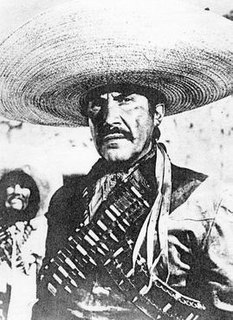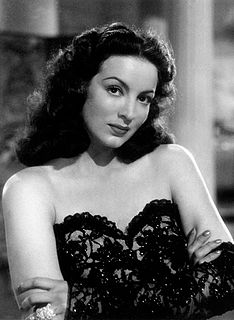Rosaura Revueltas Sánchez was a Mexican actress of screen and stage, and a dancer, author and teacher.

The history of Mexican cinema goes back to the ending of the 19th century and the beginning of the 20th, when several enthusiasts of the new medium documented historical events – most particularly the Mexican Revolution – and produced some movies that have only recently been rediscovered. During the Golden Age of Mexican cinema, Mexico all but dominated the Latin American film industry.

Dolores del Río was a Mexican actress. She was the first major female Latin American crossover star in Hollywood, with an outstanding career in American films in the 1920s and 1930s. She was also considered one of the more important female figures of the Golden Age of Mexican cinema in the 1940s and 1950s. Del Río is also remembered as one of the most beautiful faces of the cinema in her time. Her long and varied career spanned silent film, sound film, television, stage and radio.

Pedro Armendáriz was a Mexican film actor who made films in both Mexico and the United States. With Dolores del Río and María Félix, he was one of the best-known Latin American movie stars of the 1940s and 1950s.

Gabriel Figueroa Mateos was a Mexican cinematographer who worked both in Mexican cinema and Hollywood.

The Golden Age of Mexican cinema is a period in the history of the Cinema of Mexico between 1933 and 1964 when the Mexican film industry reached high levels of production, quality and economic success of its films, besides having gained recognition internationally. The Mexican film industry became the center of commercial films in Latin America.

Gata Salvaje is a telenovela which aired first on Venevisión in Venezuela on May 16, 2002 and some days later was released on the Spanish language U.S. station Univision from mid-summer of 2002 until May 2003, and later aired in Mexico on Canal de las Estrellas from January 2003 to December 2003.

The Soldiers of Pancho Villa is a 1959 Mexican epic historical drama film co-written, produced, and directed by Ismael Rodríguez, inspired by the popular Mexican Revolution corrido "La Cucaracha". It stars María Félix and Dolores del Río in the lead roles, and features Emilio Fernández, Antonio Aguilar, Flor Silvestre, and Pedro Armendáriz in supporting roles.
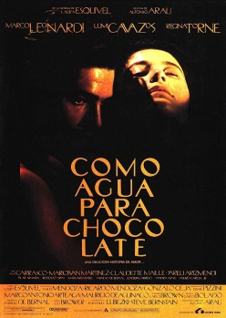
Like Water for Chocolate is a 1992 Mexican film in the style of magical realism based on the popular novel, published in 1989 by first-time Mexican novelist Laura Esquivel. It earned ten Ariel Awards including the Best Picture and was nominated for a Golden Globe Award for Best Foreign Language Film. The film became the highest-grossing Spanish-language film ever released in the United States at the time. The film was selected as the Mexican entry for the Best Foreign Language Film at the 65th Academy Awards, but was not accepted as a nominee.

María Candelaria is a 1943 Mexican romantic tragedy film directed by Emilio Fernández and starring Dolores del Río and Pedro Armendáriz. It was the first Mexican film to be screened at the Cannes International Film Festival where it won the Grand Prix becoming the first Latin American film to do so. María Candelaria would later win a Silver Ariel award for Best Cinematography.

Columba Domínguez Adalid was a Mexican actress, singer, and painter. She is considered a crucial figure in the Golden Age of Mexican cinema and is remembered particularly for her performance in the film Pueblerina (1949), which is considered one of the jewels of the Mexican Cinema. Domínguez was romantically linked for several years with the film director Emilio Fernández.

The Torch is a 1950 Mexican / American film directed by Emilio Fernández. The film is a remake of Enamorada (1946). The film is also known as Bandit General in the United Kingdom.
Aventurera ('Adventuress') is a 1950 Mexican drama film directed by Alberto Gout and starring Ninón Sevilla and Andrea Palma. It's considered a masterpiece of the Rumberas film. The film features Pedro Vargas and Ana María González as club singers.
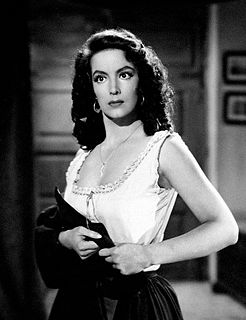
This is a filmography of María Félix, who began her career in 1942. Her role in the movie Doña Bárbara transformed her into the vamp of 1940s Mexican cinema. After her roles in the Emilio Fernández movies like Enamorada (1946), Río Escondido (1948) and Maclovia (1948), she achieved great fame in Europe.
La Selva de Fuego is a 1945 Mexican romantic drama film directed by Fernando de Fuentes and starring Dolores del Río.
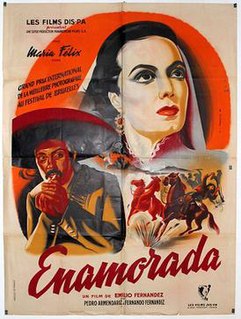
Enamorada ("Enamoured") is a 1946 Mexican drama film directed by Emilio Fernández and starring María Félix and Pedro Armendáriz. It was shot at the Churubusco Studios in Mexico City and on location in Puebla. The sets were designed by the art director Manuel Fontanals
María Islands is a 1951 Mexican drama film directed by Emilio Fernández and starring Pedro Infante, Rosaura Revueltas and Rocío Sagaón.
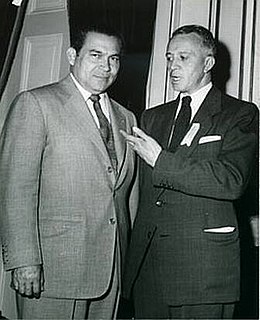
Mauricio Magdaleno Cardona, better known as Mauricio Magdaleno, was a Mexican screenwriter and occasional director of the Golden Age of Mexican cinema. He was nominated for six Ariel Awards and won for his second nomination for Río Escondido in 1949. Magdaleno was also a well-known journalist, writer, and politician.

